The world we live in is highly complex. And yet, the basic needs and drivers of human actions have remained the same for millennia. These drivers have been well documented in several theories over decades of research, and there exist many other theories on intrinsic and extrinsic motivations. Here we shall delve into the incentive theory.
Here are the topics discussed in this article:
- What Are The Theories of Motivation?
- What Are the Content Theories of Motivation?
- Maslow’s Hierarchy of Needs
- Herzberg’s Two Factor Theory
- McClelland’s Three Needs Theory
- McGregor’s Theory X and Theory Y
- Alderfer’s ERG Theory
- Mayo’s Motivation Theory
- What Are the Process Theories?
- Adam’sMayo’sAlderfer’sMcGregor’s Equity Theory
- Vroom’s Expectancy Theory
- Taylor’s Motivation Theory
- Bandura’s Self-Efficacy Theory of Motivation
- Locke’s Goal-Setting Theory
- What Is Incentive Theory?
- Why Does Incentive Theory Work?
- Incentive Theory At The Workplace
- Tips to Employers When Using Incentive Theory In The Workplace
What Are The Theories of Motivation?
The question “what motivates employees?” is one that scientists and researchers have been trying to answer for a long time now. And the only reason why so many answers to that question exist is that each human being is different.
So before we jump into incentive theory, let us have a brief look at the other theories of motivation.
The diagram below explains how motivation works:
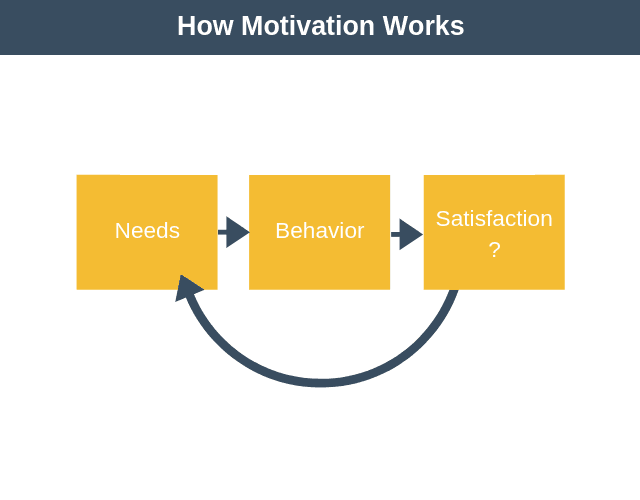
Every human being has needs and exhibits certain behaviors to fulfill those needs. Based on the level of satisfaction received, he may choose to display (or not display) certain behaviors moving forward. As is evident, this is an iterative process.
However, new needs might develop with time, requiring a person to show new behaviors.
There are two categories primarily for many theories of motivation: content theories of motivation and process theories.
Let us look at each of these theories below. Firstly, we will discuss the content theories of motivation.
What Are the Content Theories of Motivation?
Content theories look at motivation from the point of view of our needs and aspirations, focusing on what will motivate us. The content theories of motivations are Maslow’s theory, Herzberg’s Two Factor Theory, McClelland’s Three Needs Theory, McGregor’s Theory X and Theory Y, Alderfer’s ERG Theory, and Mayo’s Motivation Theory.
Let’s learn more about each one.
Maslow’s Hierarchy of Needs
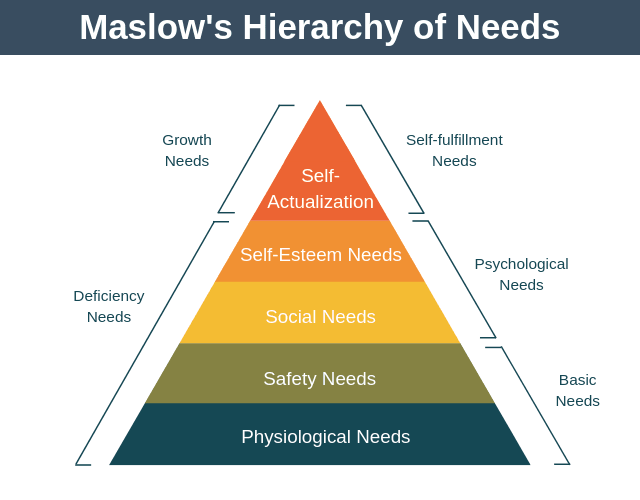
Here, the needs are arranged in the form of a hierarchy. The basic concept is that needs at a lower level have to be satisfied before a person goes on to the next level and aims to meet those needs.
Here are the five levels of hierarchy –
- physiological needs – Food, water, etc
- safety needs – safety from disasters, accidents, and job security
- social needs – belonging to groups and having relationships
- esteem needs – receiving praise and recognition
- self-actualization needs – living up to one’s full potential
Herzberg’s Two Factor Theory
According to Herzberg, two factors contribute to the motivation of employees, and they are motivators and hygiene factors.
- Motivators: These factors make the employee work harder if present—for instance, opportunities for career growth.
- Hygiene factors: The presence of hygiene factors will not cause employees to work harder, but their absence will demotivate them. Examples are the working environment and remuneration.
McClelland’s Three Needs Theory
This theory states that each individual has the exact three needs – the need for achievement, affiliation, and power.
- Need for achievement– Examples of this would be getting a promotion or setting new benchmarks
- Affiliation Needs – Here, you are accepted as part of a group.
- Need for power– Examples of this are motivation by being in charge of others.
McGregor’s Theory X and Theory Y
This theory puts employees in two broad categories. Theory X assumes that employees are lazy and unmotivated. Hence they need constant supervision.
On the other hand, Theory Y presumes that employees are ambitious and self-motivated. So they will do well under the right conditions.
Alderfer’s ERG Theory
This is similar to Maslow’s theory. There are needs arranged in a hierarchy as follows:
- Existence needs – These needs are essential for your physical well-being. Examples are food and water.
- Relatedness Needs – These needs focus on connecting with other people, such as working in a team and positive interactions.
- Growth Needs – These are the needs to perform meaningful or fulfilling work such as volunteering for an NGO.
Mayo’s Motivation Theory
This theory believes that two factors influence your motivation in the workplace. Firstly the job content includes the factors that make up your job, and secondly, the aspect of the social relations has how well you get on with your peers.
Let us move on to the process theories now.
What Are the Process Theories?
In contrast to the content theories of motivation, process theories, as the name suggests, are concerned with the process of motivation. And additionally, they also look at how they can modify these processes.
The process theories are Adam’s Equity Theory, Vroom’s Expectancy Theory, Taylor’s Motivation Theory, Bandura’s Self-Efficacy Theory of Motivation, and Locke’s Goal-Setting Theory.
Let’s deep dive into each of them.
Adam’s Equity Theory
This theory states that high levels of employee motivation in the workplace can only be achieved if each employee perceives their treatment to be fair relative to others.
Employees can compare themselves to their experience in their current or previous firms. Additionally, they can assess themselves against their colleagues in their current company or outside it.
Vroom’s Expectancy Theory
As per the expectancy theory, an individual chooses the behavior that maximizes pleasure and minimizes pain. Three factors that must be present here
- Expectancy – The belief that if one puts in efforts, he will achieve the target.
- Instrumentality – The belief that achieving the targets will help earn rewards.
- Valence – One must want and value the rewards on offer.
To determine the motivation, one must multiply these values. A higher answer is an indication of higher motivation.
Taylor’s Motivation Theory
This theory has two parts: How employees behave and maximize their efficiency, given that we know their behavior.
Taylor believed that money was the only motivator for employees, and they didn’t enjoy work. So employees must be closely monitored to ensure that they are not slacking.
Bandura’s Self-Efficacy Theory of Motivation
This theory looks at task-specific motivation. The higher the self-efficacy, the higher the belief that you can complete a task.
Four factors contribute to a person’s self-efficacy
- Experience – If one has performed a job previously, it is likely to increase his confidence in achieving the same task.
- Social Persuasion – Encouragement from others will help one complete a task. But discouragement will have the opposite effect.
- Vicarious Experience – A person watches others complete a task to develop self-efficacy.
- Physiological feedback– The human body provides feedback on completing a task, and the interpretation of this feedback determines an individual’s self-efficacy.
Locke’s Goal-Setting Theory
This theory says that if one sets the right goals, it leads to higher motivation and productivity. The right goals have the following characteristics:
- Clarity – To be motivating, a goal must be clear.
- Challenging – It must be reasonably challenging.
- Commitment – One must display a complete commitment to the goal.
- Feedback – One must get regular feedback about the goal to stay motivated.
- Complexity – It must not be too complex.
What Is Incentive Theory?
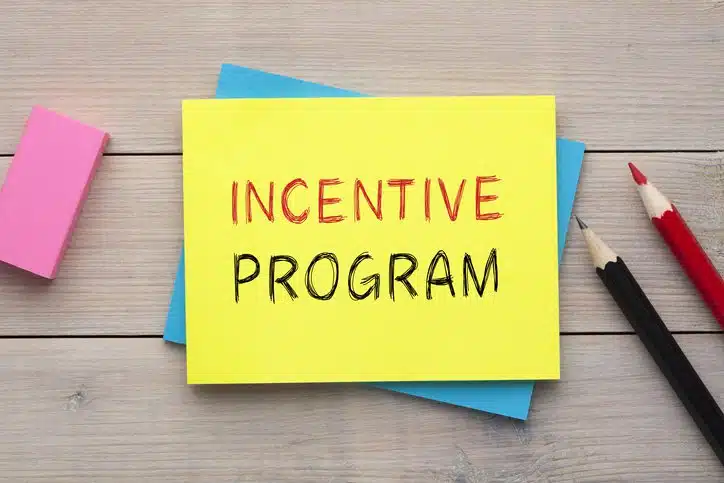
The incentive theory is otherwise known as the reinforcement theory of motivation. Professor Burrhus Fredric Skinner was an American professor of psychology at Harvard from 1958 to 1974.
He believed that an individual’s behavior was an output of its consequences. Thus it was essential to design systems that rewarded good behavior and discouraged bad behavior.
According to the incentive theory, a tangible or intangible reward is given right after an action. This is done to cause the behavior to occur again.
A positive meaning is associated with this behavior to achieve this desired repetition, which is crucial.
For instance, an athlete trains hard to qualify for the Olympics and eventually wins the gold medal. Here, the incentive is to be recognized as the Olympic champion, the most coveted title in the sport.
Studies have shown that if the reward is given immediately, the chances of the behavior occurring again are greater.
Incentive theory is a type of positive reinforcement. A reward has to appear to be within reach of an individual. If it is not so, the person loses all motivation to work towards that reward, which defeats the very purpose of the reward. A vital attribute of the reward is attainability.
As mentioned before, the reward comes right after the occurrence of a particular behavior. It motivates continuous positive stimulation at work in incentive theory. As a result, the aim of the reward here is to increase the frequency or magnitude of the desired behavior.
Why Does Incentive Theory Work?

To understand how incentive theory works, we have to come to grips with the idea that not all incentives are created equal. What might excite one person may not affect another to nearly the same extent.
So, determining what incentives motivate a person can involve understanding the combination of physiological, social, and cognitive forces at play.
However, one must also remember that the value of an incentive differs in different situations. An example of this is that a person may react differently to being offered a pizza when he’s not hungry compared to when he is.
Also, extrinsic motivations are the ones that drive the incentive theory of motivation. Here the motivation to act fades away when one achieves the goal.
Incentive Theory At The Workplace
Broadly speaking, there are two types of workplace incentives – monetary and non-monetary. Financial rewards work linearly. They are physiologically rewarding and help people feel secure in their roles. Many employees work harder if they are promised raises or promotions.
Other non-monetary incentives include – job security, recognition, and professional development.
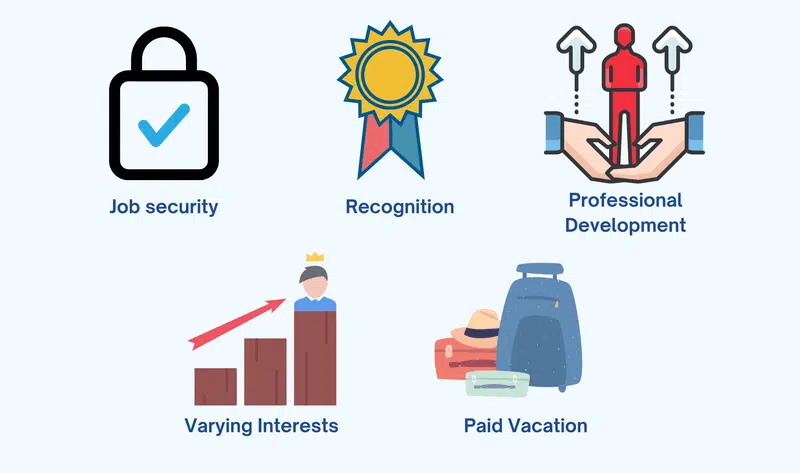
Job security
Ending a probationary period or receiving tenure are simple examples of job security. They incentivize an employee to perform better and contribute to the growth of an organization.
Giving timely feedback is another way to ensure that employees feel valued. As a result, they will be motivated to improve the firm’s performance.
Recognition
Recognition can be monetary or non-monetary. Some forms of recognition used to reward employees are – long service awards, employee of the month awards, or praise during public meetings. This is another incentive that often motivates employees.
Professional Development
The opportunity for professional development is another instance of incentive theory at the workplace. Employees prefer to have a skilled workforce.
So they provide training certifications and send people to various industry events to keep themselves abreast of the latest trends in their field.
Promotions
Promotions are an extremely crucial motivator at the workplace. Apart from being financially rewarding, promotions are an excellent way for organizations to show faith in their employees.
They indicate that an employee is ready to take charge of more responsibilities, and this recognition shows that the employee is capable. Also, promotions lead to an enhanced sense of job security linked to their past performance.
Paid Vacation
One can consider giving employees compensation for taking time off or offering them additional vacation days. This is the ideal incentive for people who are planning a long vacation. Also, this helps prevent employee burnout.
How To Apply Incentive Theory In The Workplace?
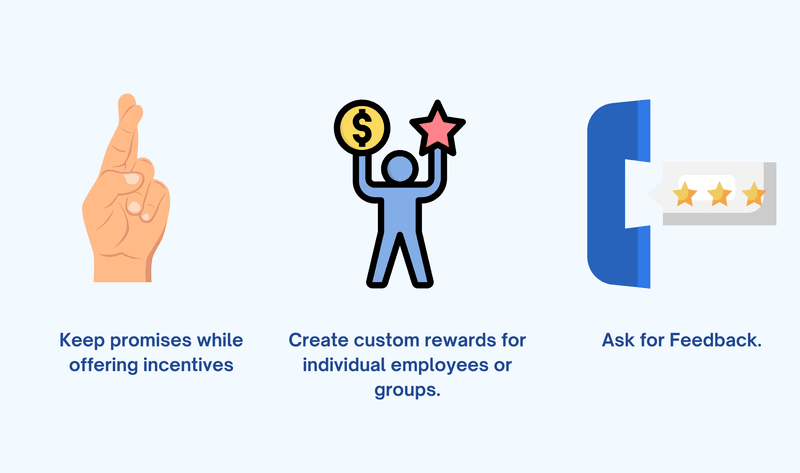
This section shall examine some things that employers must bear in mind to use incentive theory effectively in the workplace.
Keep promises while offering incentives.
One has to realize that a manager will only achieve his objectives if his team is motivated and is performing to their potential. So, if an employer has promised his team an off-site after a tough quarter, he must keep his word to maintain the team morale.
Create custom rewards for individual employees or groups.
One size fits all. This philosophy rarely works in real life, and similar is the case with incentives as well. So the manager must remember to customize his rewards. In the case of the sales team, a cash bonus might be an apt recognition. However, a marketing team member might look for a few extra days off after successfully executing a tricky campaign.
Ask for feedback.
Lastly, one can always ask for feedback from employees or teams on whether their incentives work. Managers can look for inputs such as – Do people want individual or group incentives.
Also, employees can explain the kinds of incentives they are looking for and why. This will help the management in implementing incentive theory effectively.
In Conclusion
Each employee is different, and hence the kind of incentive that he is looking for will also be different. However, employees also need to understand what they like the most about their current jobs and what else they are looking for.
Similarly, employers must know that different situations call for different types of incentives. Also, the factors that lead to employee motivation vary according to the stages of one’s career.
Junior employees might look for more money, whereas senior employees would look for greater stability. A complete understanding of the different factors will lead to the successful rollout of incentive theory.

Ranu Kumari is a Professional Writer and a Marketing enthusiast who currently runs her own Marketing Consultancy, LatitudeBOX. She has written promotional articles for multiple brands and has published her work in Scopus indexed journals. She is passionate about expressing her thoughts and ideas to connect with her readers in a voice that they understand.
